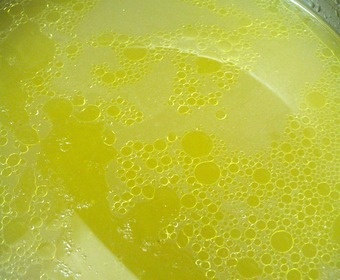
Boiling fish stock
Most pros will tell you that the most important thing when cooking fish is to go for the catch of the day. They may also tell you that the second most important thing is to truly realize the value and the usefulness of making your own fish stock. This requires the right raw materials and some awareness of the right techniques.
The stock is the foundation
If you want to take your fish dishes to a higher level in one single step, cooking your own stock – or buying quality stock from your fishmonger – is the way to go. Unfortunately, the bouillon cubes and bottles of stock you buy in a food store contain almost nothing but salt. They add little flavor and are made in ways which have nothing to do with what you would define as “cooking”.
Freeze in advance
When you make your own stock, freeze it in cubes or other practical (small) vessels. You can prepare it far in advance.
How to boil fish stock
Flatfish make good, tasty stock. Remove the gills, which can give a bitter taste. For clean flavors, avoid fat species of fish. The more fish remains, the more flavor.
Use root vegetables and spices to taste. A common base is carrots, onion and celery. Whole white pepper is also a good bet. Rinse the fish remains with cold water. The colder and cleaner the water when starting out, the clearer and “prettier” your stock will turn out.
If the stock is allowed to boil you will end up with flavors that you don’t want. It should only simmer gently for about 30 minutes. Leave it to cool. Don't remove the lid and allow for this part to take some time.
Strain thoroughly and reduce through boiling. Pour off the last, cloudy centimeter remaining on the bottom of the pot.
Don’t add salt until you have reduced your stock.
Careful with hygiene
Use only clean tools and vessels. Pathogens thrive in a nutritious stock (but their growth will come to a stop with freezing). Newly made stock in a pot with the lid still on is basically free from contamination of any kind. The weakest link in the process comes when apportioning the stock into smaller vessels – so that you can, at any time, use just as much as you need.


